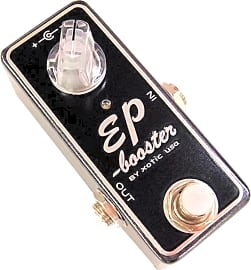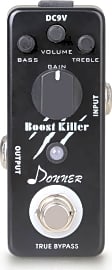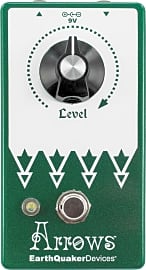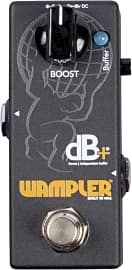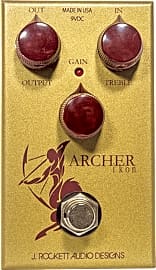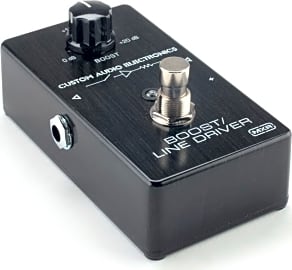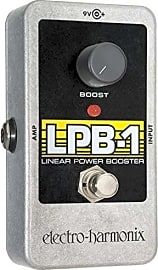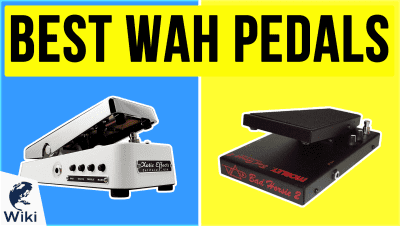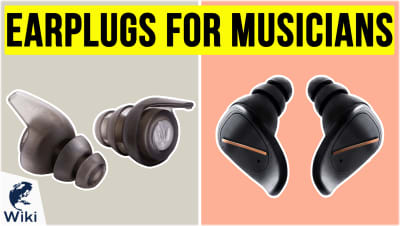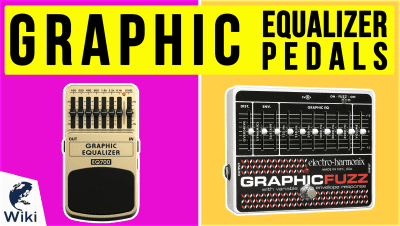The 10 Best Boost Guitar Pedals

This wiki has been updated 35 times since it was first published in June of 2016. Playing in a rock band involves a lot of teamwork, but what happens when you have a guitar solo and your drummer decides to start playing even harder? Whether you're looking to cut through the noise for one shining moment or add a little juice to a long chain of pedals whose signal has begun to weaken, this list offers a range of options that can boost volume and improve tone. When users buy our independently chosen editorial recommendations, we may earn commissions to help fund the Wiki.
Editor's Notes
March 17, 2020:
When it comes to pedals, I’m a bit of a minimalist, and I wanted to move this list towards ‘simpler’ and 'purer' single-function pedals and avoid multi-effects pedals, especially when the effects crossed genres from distortion to dynamic to equalizer, etc. I’m not saying that there aren’t good multi-effects pedals out there, but the high-quality ones tend to be larger and cost quite a bit more because of what they’re providing, which is why I removed the Orange Two Stroke. Most of the options I’ve introduced only offer a boost function, and are very good at offering just that. They more or less produce a clear, transparent amplification.
For boost pedals, you generally want input impedance to be very high and output impedance to be very low. Input impedance needs to be at least 10x the pickup impedance, otherwise you risk losing some treble. With that being said, I’ve introduced some simple, single-function pedals like the Zvex Effects SHO which is a high-quality boutique option from a brand known for making pedals that meet specific demands, and it's very good at producing a clear boost, thanks in part to its ultra-high impedance. However, this also makes it quite expensive, and while it's better than most other options, the difference in clarity isn’t substantial enough to warrant it a place in the top 3. The pedals in this list all offer transparent boost anyways with no loss of tone.
I’ve also included an option from Dunlop manufacturing - a company known more for their filter and distortion pedals, than their volume pedals. I’m personally a huge fan of their wah pedals, but they make great booster pedals too, and the Jim Dunlop MC401 does well to uphold the brand’s reputation.
Finally, I replaced the Andoer Aroma ABR-3 with a model from a more reputable brand in the Electro-Harmonix LPB-1. Like Dunlop, EHX has a notable history of making high-quality expression pedals. I’ve made a couple of other updates including swapping out the Donner Pearl Tremor for the slightly more sophisticated Donner Boost Killer.
Boost Through The Noise
They’re an ideal tool for solo guitarists who are humane enough to realize that there’s more to the song than their 30 seconds of shredding.
If you’ve ever played guitar in a band with at least one other guitarist (not counting the bass player), you’re likely familiar with the volume dance. As your band sets up to practice, record, or gig at a live event, you generally do a sound check to make sure the levels are ideal. In a perfect world, that would give you punchy vocals, kick drum, and snare drum, with the bass guitar occupying the rest of the low end, and the guitars hovering gently just above the mids. Guitarists tend to have problematic egos, however, and I speak both as an egomaniacal guitarist myself and as someone who worked as a live sound engineer for a few years.
Usually, one guitarist has their amp turned up just a little too loud. Without the oversight of a take-no-prisoners engineer, the other guitarist turns their amp up to compensate. The only problem is that they often go a little too far — or at least that first guitarist thinks they went too far, and then they turn their amp up, and so on and so on, until an arms race of sorts destroys the audience’s ability to hear anything but two competing guitars.
As a quick aside, in addition to protecting your ears from long-term exposure to high-decibel sounds, this dance is another good reason to wear earplugs to small concerts. They do a great job cutting out the higher frequencies put out by overly loud guitars, allowing you to hear a more complete picture of the song the way the band intended it.
For the musicians on stage, there is a simple solution to the problem at hand, one that can give a little extra pep to your picking when it’s your time to shine, and also allow you to rejoin the ranks of reasonable people when your solo ends. We’re talking about the boost pedal.
Boost pedals may seem like utterly simple devices, and that’s because they are. They amplify and condition a guitar’s signal just enough to allow it to punch through the rest of the mix. They’re an ideal tool for solo guitarists who are humane enough to realize that there’s more to the song than their 30 seconds of shredding.
Which Boost Pedal Is Right For You?
Since boost pedals are designed with a pretty simple purpose in mind, many of them appear extraordinarily similar. There’s usually a button you depress with your foot and a volume knob that controls how much extra juice the boost provides. Thinking that you can just grab any old boost pedal and have it perform to your expectations is folly, however. There’s more to these pedals than meets the eye.
A boost pedal will change your tone. Cheaper boost pedals will change it more drastically, and the majority of the pedals on our list will only change it almost imperceptibly. Depending on the amp you’re using and the placement of the boost on your pedal board, this could get complicated pretty quickly.
Boost pedals will treat amplifiers differently, as well, and knowing how your amp will react to an increase in signal strength is vital.
Some boost pedals own up to the fact that they’re going to have an effect on your tone, and these often come with built-in tonal controls. These controls can appear in the form of something as simple as a tone knob, or something as complex as a multi-band equalizer.
If you don’t have too many pedals in your arsenal, but you want to get a little extra oomph without altering your tone too much, a boost pedal with its own tonal controls is likely the way to go. More obsessive tone controllers may have an additional multi-band equalizer in their setup, and they might be better off with a simpler boost pedal, keeping their EQ work confined to one controller.
Boost pedals will treat amplifiers differently, as well, and knowing how your amp will react to an increase in signal strength is vital. Solid-state amps can take that added signal and compress it the way they compress everything you send in their direction. You may find that you need to push your boost pretty hard to get a significant result, and that the shape of your tone may feel more confined.
If you play through a tube amp, however, your boost is liable to act as an overdrive pedal, as the increased signal strength pushed the tubes toward their natural distorted state. This is a delicate balance, especially if you prefer a cleaner tone, but few sounds rival the smooth, warm crunch of a naturally overdriven tube amp.
The last thing to consider is the footprint of the pedal and its potential placement on your board. Most guitarists put their boost pedals toward the end of their array, giving them the ability to increase the volume of their effects without increasing the signal going through additional effects pedals. This helps give you total control over other effects without unintentionally compressing the boost signal through extraneous pathways.
Additional Ways To Hone Your Tone
Creating a sound that is specifically your own is one of the great joys of writing music for the guitar. Most musicians can listen to ten seconds of players like Clapton, Hendrix, Satriani, Metheny, or St. Vincent, and immediately recognize the sound — not just the style, but the tone. In addition to a boost pedal, you’re going to want a few extra goodies to ensure your sound is uniquely your own.
Once you’ve got your setup all laid out on a single, powered pedal board, you’ll be ready to rock.
Installing new pickups in your guitar is the best place to start. Try throwing a humbucker (stacked or otherwise) at the bridge, and a warmer, perhaps bluesier pickup at the neck. You’ll be able to blend anything from arena rock to honky-tonk on a single guitar.
From there, experiment with and lay out your perfect pedal array. In addition to a boost, you’re going to want a reverb pedal (especially useful when recording), a delay unit, and some form of distortion. Chorus pedals have been particularly popular in indie rock over the last few years, as well. Once you’ve got your setup all laid out on a single, powered pedal board, you’ll be ready to rock.


